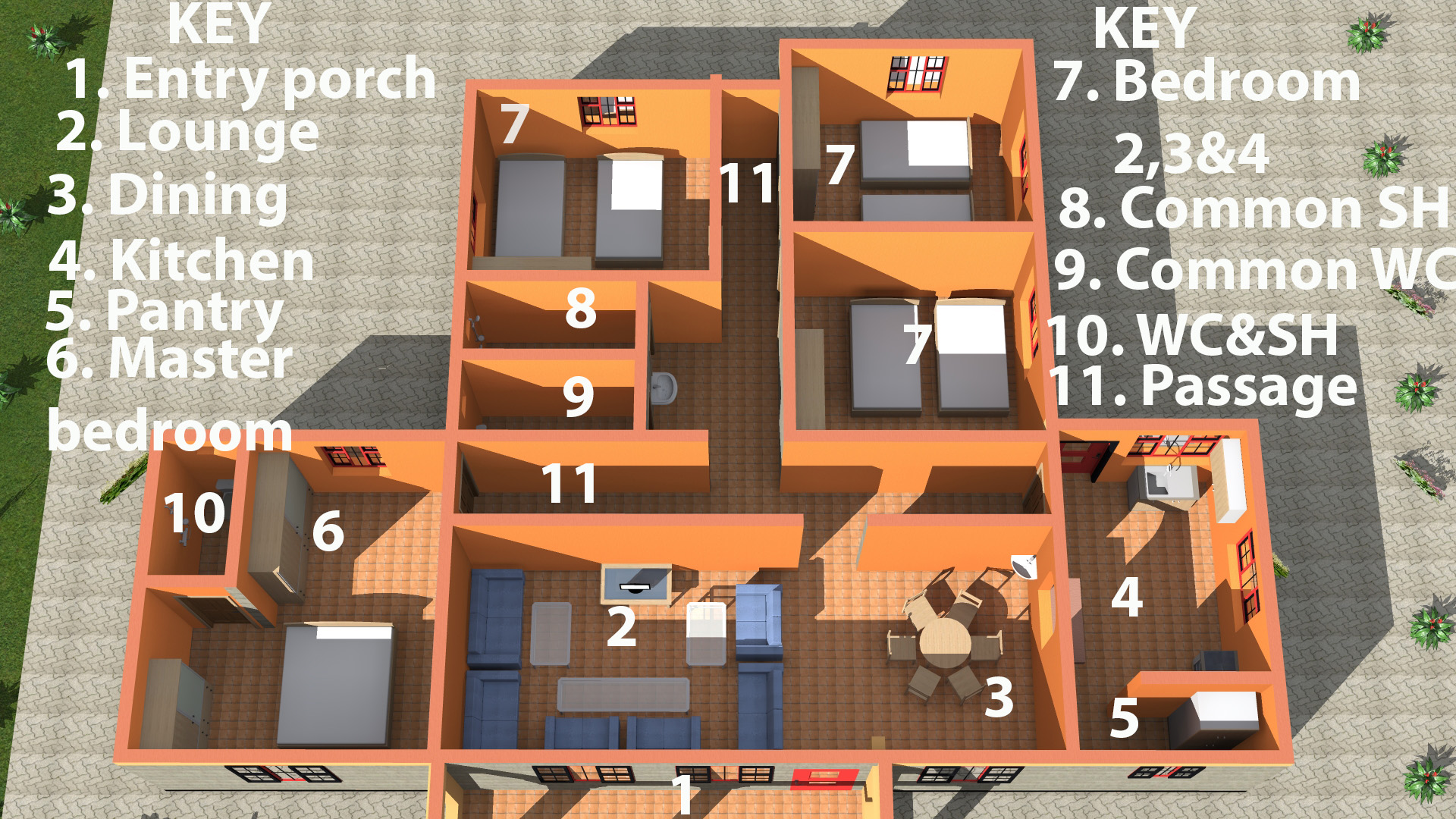Interior Design and Features: Building A Four Bedroom House

Designing the interior of a four-bedroom house involves creating spaces that are both functional and aesthetically pleasing, catering to the diverse needs of a family and individual preferences. This section explores various design themes, furniture arrangement strategies, color palettes, lighting techniques, and the integration of sustainable features to create a welcoming and comfortable living environment.
Theme-Based Interior Design, Building a four bedroom house
A well-defined theme can provide a unifying element for the interior design, creating a cohesive and personalized atmosphere. Consider incorporating different themes for each bedroom, reflecting the individual personalities and interests of the family members. For instance, a teenager’s room could embrace a modern industrial theme with exposed brick walls, metallic accents, and sleek furniture. In contrast, a child’s room could be infused with a whimsical fairytale theme, featuring soft pastel colors, playful patterns, and whimsical decor.
Furniture Arrangement
The placement of furniture is crucial for maximizing space, enhancing functionality, and creating a balanced aesthetic. In the living room, consider arranging seating around a focal point, such as a fireplace or a large window, to encourage conversation and create a sense of intimacy. In the dining room, a rectangular table positioned centrally with chairs around it allows for easy movement and creates a welcoming space for gatherings.
Color Palettes and Lighting
Color palettes play a significant role in setting the mood and ambiance of a space. Warm colors like reds, oranges, and yellows can create a cozy and inviting atmosphere, while cool colors like blues, greens, and purples can evoke a sense of calm and tranquility. Lighting is equally important, as it can enhance the visual appeal of a room and create different moods. Natural light should be maximized through large windows, and artificial lighting should be used strategically to highlight specific areas and create a warm and inviting glow.
Sustainable Features
Incorporating sustainable features into the interior design is essential for creating an environmentally responsible and energy-efficient home. Energy-efficient appliances, such as LED lighting and smart thermostats, can significantly reduce energy consumption. Renewable energy sources, such as solar panels and wind turbines, can further minimize the reliance on fossil fuels.
